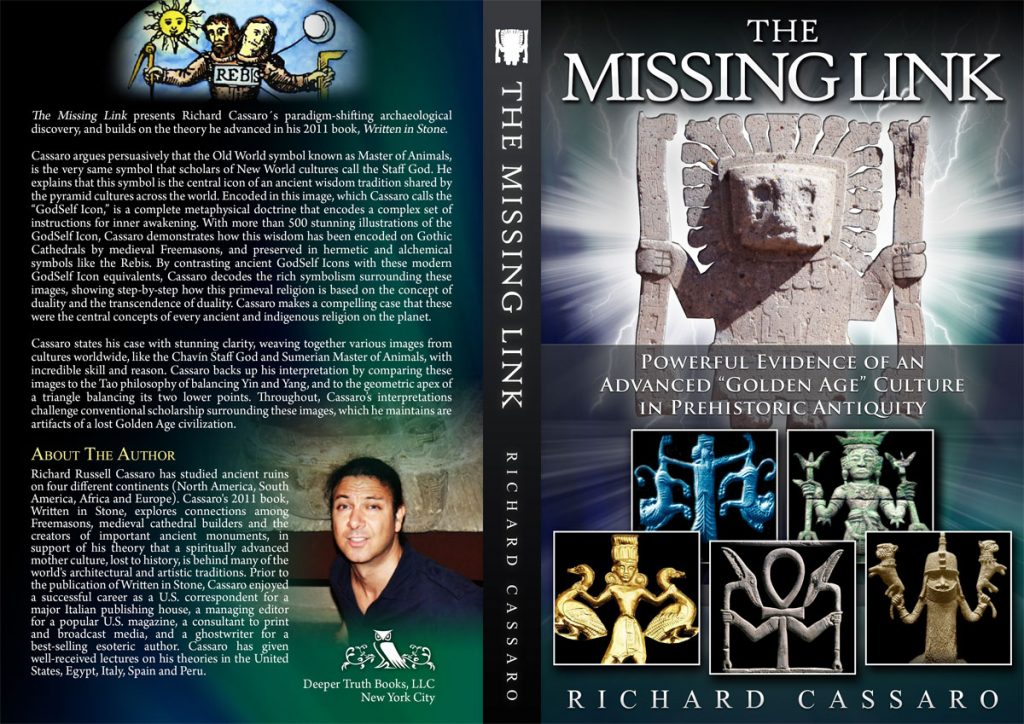
inilah Buku karya Richard Cassaro:
Mata Rantai yang Hilang: Bukti kuat dari Budaya Maju “Golden Age” di Zaman Prasejarah Kuno (The Missing Link
The Missing Link, Richard Cassaro
It is with much excitement that we introduce our Author of the Month for June, Richard Cassaro, and his fascinating new ebook, The Missing Link, in which he presents a crucial iconographic link in our search for an advanced, global mother culture in “prehistoric” antiquity.
“Ikon GodSelf “, adalah fitur yang menonjol dari kebanyakan budaya kuno, yang melemparkan keraguan serius tentang teori konvensional evolusi spiritual manusia dan munculnya peradaban (“GodSelf Icons,” a prominent feature of most ancient cultures, cast serious doubts about conventional theories of human spiritual evolution and the emergence of civilization.)
Saya pertama kali menetapkan penemuan awal saya tentang GodSelf Icon (Simbol Diri Ketuhanan) dalam buku saya 2011, Writen in Stone. Sejak itu, saya telah menemukan bahkan alasan yang lebih kuat untuk memusatkan perhatian pada pola yang luar biasa ini. Buku e-book, Saya yang baru The Missing Link: Bukti Baru yang Sangat Kuat Tentang Peradaban Budaya Ibu/Induk “Golden Age” di zamanPrasejarah yang Jauh, menyediakan lebih mendalam analisis saya tentang penemuan GodSelf Icon. ( I first set forth my initial discovery of the GodSelf Icon in my 2011 book, Written in Stone. Since then, I have found even more powerful reasons to focus attention on this remarkable pattern. My new e-book, The Missing Link: Powerful New Evidence of an Advanced “Golden Age” Mother Culture in Remote Prehistory, provides a more in-depth analysis of my GodSelf Icon discovery.)
The GodSelf Icon adalah penggambaran tokoh sentral, seorang pria menghadap ke depan atau wanita yang memegang di kedua tangannya yang keluar dari tubuh, sepasang hewan atau sepasang benda yang simetris. Obyek kembar berdiri di tengah untuk prinsip-prinsip yang bertentangan, dan tokoh sentral merupakan pahlawan atau tokoh bijak yang menggabungkan dua prinsip yang berlawanan untuk menciptakan keseimbangan spiritual yang membuka pintu baru persepsi dan menciptakan keterpusatan keberadaan (makhluk). (The GodSelf Icon is a depiction of a central figure, a forward-facing man or woman who holds in his/her hands outward from the body either a pair of animals or a pair of staffs symmetrically. These twin objects stand for opposing principles, and the central figure represents the hero or sage who combines those two opposing principles to create a spiritual balance that opens new doors of perception and creates centeredness of being.)
Para murid/siswa /pelajar ilmu gaib (Okultisme) akan segera mengenali deskripsi ini dalam konsep yang berusia-tua tentang coincidentia oppositorum ( “kebetulan yang berlawanan”) . Ini adalah salah satu arti sentral dari GodSelf Icon (Lambang Diri Ketuhanan) seperti yang akan kita lihat di bawah. (Students of the occult will immediately recognize in this description the age-old coincidentia oppositorum (“coincidence of opposites”) concept. This is one of the central meanings of the GodSelf Icon, as we’ll see below.)
The GodSelf Icon adalah ciri utama dari karya seni dan artefak yang ditemukan di peradaban Mesir kuno, Assyria, Babylon, Peru, Meksiko, Kolombia, Kosta Rika, Afrika, China, Kamboja, Mesopotamia, India, Crete, Indonesia dan banyak tempat lainnya. Di hampir setiap setiap peradaban ini, GodSelf Icon dapat ditelusuri kembali ke era yang sangat kuno dan formatif. Semakin jauh melihat kembali waktu masa lalu kita , semakin kita melihat GodSelf Icon. (The GodSelf Icon is a central feature of art and artifacts found in ancient Egypt, Assyria, Babylon, Peru, Mexico, Columbia, Costa Rica, Africa, China, Cambodia, Mesopotamia, India, Crete and many other places. In almost every one of these civilizations, the GodSelf Icon can be traced back to a very ancient and formative era. The further back in time we look, the more we see the GodSelf Icon.)
Sebuah contoh yang jelas dari hal ini adalah di Peru, di mana suku Inca hanyalah budaya terbaru dan terakhir yang menggunakan GodSelf Icon. Jika kita melihat ke zaman kuno yang jauh lebih dalam, kita melihat beberapa versi dari GodSelf Icon, dari satu sisi negara ke yang lain: (A clear example of this is in Peru, where the Incas were merely the latest and final culture to use the GodSelf Icon. If we look to a much deeper antiquity, we see multiple versions of the GodSelf Icon, from one side of the country to the other:)
Semua peradaban pra-Inca yang pernah berkembang di Peru tidak hanya menggunakan GodSelf Icon, tapi telah menganggap simbol ini sebagai puncak dari budaya mereka. Budaya ini termasuk Chachapoyas, Chancay, Chavin, Chimu, Moche, Nazca, Paracas, Sican-Lambayeque, Tiahanaco (Bolivia) dan Wari. Para ilmuwan dari Dunia Baru telah mencatat pentingnya simbol ini dan mereka menyebutnya simbol ini yang Kami temukan penjelasan berikut untuk “Staf dewa” di Wikipedia “Staf Tuhan.” (Malaikat Allah): (All of the pre-Inca civilizations that once flourished in Peru not only used the GodSelf Icon, but regarded this symbol as the pinnacle of their culture. These cultures include the Chachapoyas, Chancay, Chavin, Chimu, Moche, Nazca, Paracas, Sican-Lambayeque, Tiahanaco (Bolivia) and the Wari. Scholars of the New World have noted the importance of this symbol and they call this symbol the “staff god.” We find the following explanation for the “staff god” in Wikipedia:)
“Staf Tuhan Allah adalah dewa/malaikat utama dalam budaya Andes. Biasanya digambarkan memegang staf di masing-masing tangan … karakteristik yang lain tidak diketahui, meskipun ia sering digambarkan dengan ular di hiasan kepala atau pakaian. Penggambaran tertua dari Staf Tuhan Allah ditemukan pada beberapa fragmen labu yang rusak di situs pemakaman di Lembah Pativilca Sungai … dan penanggalan karbon 2250 SM. Hal ini membuat citra dewa tertua dapat ditemukan di Amerika. ”
-Wikipedia (“The Staff God is a major deity in Andean cultures. Usually pictured holding a staff in each hand…his other characteristics are unknown, although he is often pictured with snakes in his headdress or clothes. The oldest known depiction of the Staff God was found on some broken gourd fragments in a burial site in the Pativilca River Valley…and carbon dated to 2250 BC. This makes it the oldest image of a god to be found in the Americas.”
—Wikipedia)
Icon yang sama ini, dengan “pose yang” yang sama, tersebar luas di antara budaya Old World (dunia lama) dari Belahan Timur Dunia. Para ilmuwan dari Dunia Lama memanggil GodSelf Icon Berikut adalah entri Wikipedia untuk “Master of Animals” “Master of Animals.”: (This very same Icon, with the very same “pose”, was widespread among the Old World cultures of the Eastern Hemisphere. Scholars of the Old World call the GodSelf Icon “the Master of Animals.” Here is the Wikipedia entry for “Master of Animals”:)
“The Master of (yang) Hewan atau Lord of the Animals adalah motif dalam seni kuno menunjukkan manusia antara dan menggenggam dua hewan dihadapkan. Hal ini sangat luas dalam seni Timur Dekat Kuno dan Mesir … Mereka kadang-kadang juga memiliki setara perempuan, yang disebut Nyonya Hewan … Mereka semua mungkin memiliki prekursor Zaman Batu … ”
-Wikipedia
“The Master of (the) Animals or Lord of the Animals is a motif in ancient art showing a human between and grasping two confronted animals. It is very widespread in the art of the Ancient Near East and Egypt…They sometimes also have female equivalents, the so-called Mistress of the Animals…They may all have a Stone Age precursor…”
—Wikipedia
Berikut adalah beberapa representasi dari apa yang disebut Icon-GodSelf Master Hewan di Dunia Lama-dari peradaban Old World of Jiroft, yang tanggal ke Persia (akhir milenium ke-3 SM): (Here are several representations of the GodSelf Icon—called Master of Animals in the Old World—from the Old World civilization of Jiroft, which is dated to Persia (late 3rd millennium BC):)
Meskipun mengakui ikon dalam disiplin masing-masing, para sarjana budaya Old World dan sarjana budaya New World memiliki:
(A) kegagalan untuk mengenali kehadiran ikon ini di seluruh dunia
(B) gagal untuk memahami ikon memahami arti yang sama di seluruh dunia
(C) gagal untuk menghubungkan (a) dan (b), dan dengan demikian tetap tidak menyadari bahwa THE “GODSELF ICON” ADALAH SIMBOL DARI AGAMA KUNO UNIVERSAL YANG HILANG. yang dulu dikenal di seluruh dunia.
Buku saya menyajikan analisis komparatif beberapa dari GodSelf Ikon yang berasal dari budaya yang telah lama dianggap asing dari satu sama lain dengan warisan atau melalui kurangnya kemungkinan dalam perdagangan.
Berikut adalah contoh:
Despite recognizing the icon in their respective disciplines, scholars of Old World cultures and scholars of New World cultures have:
(a) failed to recognize the icon’s presence worldwide
(b) failed to understand the icon holds the same meaning worldwide
(c) failed to connect (a) and (b), and thus remain unaware that THE “GODSELF ICON” IS THE LOST SYMBOL OF AN ANCIENT UNIVERSAL RELIGION once known worldwide.
My book presents multiple comparative analyses of GodSelf Icons that stem from cultures that have long been considered alien from each other by heritage or through lack of trade possibilities.
Here is an example:
Kesamaan di antara gambar di atas benar-benar mencolok. Tidak hanya bentuk keseluruhan memiliki kecocokan yang sempurna, tapi bahkan detail kecil adalah kecocokan yang sempurna tangan sejajar, siku, tubuh jongkok, dan “staf” memanjang di masing-masing tangan secara simetris.
The similarity between the images above is truly striking. Not only is the overall shape a perfect match, but even the small details are a perfect match—the parallel hands, elbows, squat body, and elongated “staffs” in each hand symmetrically.
Berikut ini adalah melihat lebih dekat: Here is a closer look:
gambar potongan batu ini dari Bes dewa Mesir memiliki kemiripan yang kuat dengan ukiran batu Viracocha di Gerbang Matahari di Tiahuanaco, Bolivia.
This rock-cut image of the Egyptian god Bes bears a strong resemblance to the stone engraving of Viracocha on the Gate of the Sun in Tiahuanaco, Bolivia.
Perbedaan gaya samping, master tukang batu kuno Mesir (di Afrika Utara) yang menciptakan ini GodSelf Icon, bernama Bes, dan tukang batu induk Tiahuanacan kuno (di Amerika Selatan) yang menciptakan citra GodSelf di Bolivia, bernama Viracocha, tampaknya telah bekerja off cetak biru dasar yang sama. Setiap akan diakui ikon lain GodSelf seperti itu.
Stylistic differences aside, the ancient Egyptian master masons (in North Africa) who created this GodSelf Icon, named Bes, and the ancient Tiahuanacan master masons (in South America) who created the GodSelf image in Bolivia, named Viracocha, seem to have been working off the same basic blueprint. Each would have recognized the other’s GodSelf icon as such.
Kesamaan visual GodSelf Ikon ini hanyalah puncak gunung es. Para ilmuwan mengatakan bahwa orang Mesir dan budaya Andes kuno telah mengikuti “keseimbangan dari kemenduaan”, untuk menemukan pusat agama yang sama, – ajaran yang justru disampaikan oleh, dan yang dikodekan dalam pose GodSelf Icon:
The visual similarity of these GodSelf Icons is only the tip of the iceberg. Scholars tell us that the Egyptians and the ancient Andean cultures followed the same “balance-of-duality-to-find-the-center” religion—which is precisely the teaching conveyed by, and encoded in the pose of, the GodSelf Icon:
Dengan memperluas kedua lengan dan tangan keluar dari tubuh, GodSelf Icon menyampaikan konsep dualitas – ide yang diungkapkan oleh benda kembar digambarkan “simetris” di masing-masing tangan (ular kembar, staf kembar, hewan kembar, dll). Berdiri di antara representasi dari dualitas, sosok pahlawan yang menandai “pusat” atau titik “keseimbangan” sehingga memberikan kita pesan sentral dari GodSelf Icon-untuk , menemukan pusat antara yang berlawanan.
By extending both arms and hands outward from the body, the GodSelf Icon conveys the concept of duality—an idea expressed by the twin objects depicted “symmetrically” in each hand (twin serpents, twin staffs, twin animals, etc.). Standing between the representations of duality, the hero figure marks the “center” or “balance” point, thus giving us the central message of the GodSelf Icon—to find the center between the opposites.
The GodSelf Icon telah diawetkan selama berabad-abad dalam tradisi okultisme, yang juga berarti menjaga”keseimbangan dari dualitas/kemenduaan untuk menemukan Yang pusat” Saya menemukan bahwa ada “memori” modern terhadap ikon global kuno ini, yang disebut Rebis, yang telah dikaitkan dengan simbolisme Freemasonry:
The GodSelf Icon has been preserved through the ages in the occult tradition, which has also retained its “balance-of-duality-to-find-the-center” meaning. I found that there exists a modern “memory” of this ancient global icon, called the Rebis, which has been linked symbolically to Freemasonry:
Rebis dari Theoria Philosophiae Hermetica (1617) oleh Heinrich Nollius. Matahari (dan kompas Masonik ) di tangan kanan, Bulan (dan Masonik persegi) di tangan kiri. Ikon memiliki dua kepala. Laki-laki yang di Kanan, yang kiri perempuan.
Rebis from Theoria Philosophiae Hermetica (1617) by Heinrich Nollius. Sun (and Masonic compass) in the right hand, Moon (and Masonic square) in the left hand. The icon has two heads. Male right, female left.
Dalam sebuah subtitle artikel Kerahasiaan dan Kekuasaan Simbolik di Freemasonry Amerika , yang muncul dalam Journal of Religion & Masyarakat (Volume 3, 2001), sarjanaperbandingan agama Hugh B. Perkotaan dari Ohio State University menjelaskan figur ini:
In an article subtitled Secrecy and Symbolic Power in American Freemasonry, which appeared in the Journal of Religion & Society (Volume 3, 2001), comparative religion scholar Hugh B. Urban of Ohio State University describes this figure:
” Misteri dari Kesimbangan “atau kebetulan yang berlawanan … ini adalah … rahasia keseimbangan universal antara baik dan jahat, terang dan gelap … pria dan wanita, matahari dan bulan, terang dan gelap – disimbolkan dengan kompas Masonik dan persegi … semua berasal dari sumber yang sama … “
“…the “Mystery of Balance” or coincidence of opposites…This is…the secret of universal equilibrium between good and evil, light and darkness…Male and female, sun and moon, light and dark—symbolized by the Masonic compass and square…all come from the same source…”
Dalam buku saya 2011, Writen in Stone, saya mengusulkan sejarah alternatif agama-agama, yang memandang spiritualitas kuno sebagai proses mengatasi kekuatan berlawanan dalam (tubuh) diri fisik untuk menemukan keseimbangan spiritual dan kekuatan batin. Untuk mendukung ide ini, saya menunjukkan bagaimana budaya kuno di seluruh dunia-dan terutama budaya-semua piramida dibangun “Triptych Temples” ( Kuil dengan Tiga Pintu/Tiga Wajah, istilah yang saya diciptakan) untuk mengungkapkan kebijaksanaan ini “keseimbangandari yang hal yang berlawanuntukmenemukanpusatNYA” :
In my 2011 book, Written in Stone, I proposed an alternative history of religion, one that views ancient spirituality as a process of overcoming opposite forces within the physical (bodily) self to discover spiritual balance and inner strength. To support this idea, I pointed out how ancient cultures worldwide—and especially the pyramid cultures—all built “Triptych Temples” (a term I coined) to express this “balance-of-opposites-to-find-the-center” wisdom:
Rahasia sejati tentang Tuhan adalah bahwa tidak pernah ada Allah yang di luar, dalam arti Alkitab. Satu-satunya tuhan Anda, batin Anda (spiritual “jiwa” Anda ) sebagai lawan dari fisik luar Anda (materi”tubuh” Anda ); tetapi Anda memiliki amnesia tentang siapa Anda sebenarnya. Tercatat Amerika Theosophist Alvin Boyd Kuhn pernah menulis, “Manusia adalah Tuhan yang terperangkap dalam tubuh hewan sesuai dengan pernyataan dari filsafat kuno …” Kebenaran pernyataan yang dikenal di zaman kuno dan telah diawetkan sampai saat ini, yang menyimpang ortodoksi agama dan takhayul, dalam ukuran besar berkat pengamanan hati dari kebenaran spiritual kuno oleh Freemason dan anggota lain dari Rahasia Societies, yang disampaikan ide ini menggunakan GodSelf Ikon yang sama.
The true secret about God is that there never was an outward God in the biblical sense. The only god is you, the inner you (your spiritual “soul”) as opposed to the outer physical you (your material “body”); but you have amnesia of who you really are. Noted American Theosophist Alvin Boyd Kuhn once wrote, “Man is a god in the body of an animal according to the pronouncement of ancient philosophy…” The truth of that statement was known in ancient times and has been preserved up to the present, in defiance of religious orthodoxy and superstition, in large measure thanks to the careful safeguarding of ancient spiritual truths by Freemasons and other members of Secret Societies, which conveyed this idea using the same GodSelf Icons.
Berikut GodSelf Ikon dari naskah esoteris yang modern berbagi postur yang sama. Dalam setiap kasus dewa berpusat, meniru pose dari Rebis atas, memegang staf surya di / tangan kanannya dan staf lunar di / tangan kirinya nya:
The following GodSelf Icons from modern esoteric manuscripts share the same posture. In each case the centered deity, mimicking the pose of the Rebis above, holds a solar staff in his/her right hand and a lunar staff in his/her left hand:
Kiri: The alkemis Mercury, dari Tripus aureus (The Golden Tripod) oleh Michael Maier, c. 1618. Tengah: Dari sebuah risalah alkemis misterius berjudul “The Hermetic dan Angka alkimia Klaudius de Dominico Celentano Vallis Novi Dari A Naskah Tertulis Dan Illuminated Pada Naples AD 1606” Kanan: Dari sebuah risalah alkemis abad ke-16 yang disebut “The Rosary dari filsuf . ”
Left: The alchemical Mercury, from Tripus aureus (The Golden Tripod) by Michael Maier, c. 1618. Middle: From a mysterious alchemical treatise titled “The Hermetic and Alchemical Figures of Claudius de Dominico Celentano Vallis Novi From A Manuscript Written And Illuminated At Naples A.D. 1606” Right: From a 16th-century alchemical treatise called “The Rosary of the Philosophers.”
Menemukan Rebis adalah momen penting bagi saya karena itu adalah jelas bahwa Rebis adalah versi modern dari motif Icon kuno GodSelf. Saya mulai belajar tentang pentingnya Rebis’ dalam manuskrip esoteris, yang menggambarkan matahari dan bulan di tangan Rebis’ sebagai lambang menandakan dualitas. Ketika saya diterapkan tombol ini untuk budaya kuno, mereka GodSelf Ikon mulai datang untuk hidup.
Discovering the Rebis was an important moment for me because it was clear that the Rebis is a modern version of the ancient GodSelf Icon motif. I began learning about the Rebis´ significance in esoteric manuscripts, which described the sun and moon in the Rebis´ hands as emblems signifying duality. When I applied this key to ancient cultures, their GodSelf Icons began to come to life.
Kesamaan Ikon GodSelf mereka, membuatnya tampak bahwa kebudayaan kuno di benua yang berbeda, entah bagaimana saling terkait, meskipun daerah ini secara geografis jauh, begitu jauh bahwa setiap hubungan langsung tampaknya mustahil. Sarjana yang mempelajari bidang ini percaya bahwa peradaban ini dikembangkan secara independen, tapi side-by-side perbandingan artefak dan monumen dari pusat budaya di seluruh dunia tampaknya mendukung gagasan bahwa kita melihat dua kacang dari pod yang sama. Saya percaya bahwa keberadaan piramida, arsitektur kubah corbeled dan mumifikasi di benua yang berbeda adalah di luar kebetulan:
The similarity of their GodSelf Icons makes it appear that ancient cultures across different continents were somehow related, even though these areas are geographically distant, so distant that any direct relationship seems impossible. Scholars who study these areas believe that these civilizations developed independently, but side-by-side comparison of artefacts and monuments from cultural centers throughout the world seem to support the idea that we are looking at two peas from the same pod. I believe that the existence of pyramids, corbeled vault architecture and mummification on different continents is beyond coincidence:
Dalam Ditulis di Batu, saya mempresentasikan bukti yang mendukung gagasan bahwa sebelumnya “Golden Age” budaya ibu sekarang hilang ke “peradaban yang hilang” saat-Graham Hancock -mungkin telah menjadi benang merah yang menyatukan budaya ini.
In Written in Stone, I presented evidence supporting the idea that an earlier “Golden Age” mother culture now lost to time—Graham Hancock’s “lost civilization”—may have been the common thread that united these cultures.
Kisah “Budaya Ibu” yang maju dalam prasejarah terpencil pertama kali ditetapkan oleh Yunani Filsuf Plato, yang menyebutnya “Atlantis.” Menurut catatan Plato, orang-orang Peradaban Ibu ini tidak berteknologi maju tapi maju secara rohani. Seperti Plato menjelaskan, Atlantis tumbuh lemah karena kecenderungan terwujudnya mereka, cukup lemah sehingga mereka mulai kehilangan kontak dengan keilahian batin yang diberikan mereka kekuatan mereka:
The story of an advanced “Mother Culture” in remote prehistory was first set forth by the Greek Philosopher Plato, who called it “Atlantis.” According to Plato’s account, the peoples of this Mother Civilization were not technologically advanced but spiritually advanced. As Plato explains, the Atlanteans grew weak due to their materializing tendencies, weak enough that they began to lose touch with the inner divinity that granted them their power:
Seperti Plato melihatnya, Atlantis yang canggih karena identifikasi mereka dengan alam mereka sendiri “ilahi”, daripada mereka “manusia” sifat. (As Plato saw it, the Atlanteans were sophisticated because of their identification with their own “divine” nature, rather than their “human” traits.)
Dalam The Missing Link, saya mengajukan gagasan bahwa GodSelf Icon adalah memori dari sifat ilahi ini dalam manusia-cara untuk mengingat keilahian dalam tubuh.
In The Missing Link, I put forth the idea that the GodSelf Icon is a memory of this divine nature in man—a way to remember the divinity within the body.
Di Yunani kuno, kisah Demeter dan Persephone, salah satu mitos dasar dari Yunani, berkaitan erat dengan ide ini. Dewa-dewa Yunani turun di sebagian besar dari Demeter, dewi panen, yang didahului sebagian besar Olympians, dan yang gambar tertua yang diwakili oleh ikon GodSelf.
In ancient Greece, the story of Demeter and Persephone, one of the foundational myths of Greece, is closely related to this idea. The Greek gods descended in large part from Demeter, goddess of the harvest, who preceded most of the Olympians, and whose oldest images are represented by GodSelf icons.
Demeter, Dewi Harvest, digambarkan sebagai periode GodSelf Icon, Roman, Augustan. (Demeter, Goddess of Harvest, depicted as a GodSelf Icon, Roman, Augustan period.)
“For many generations…they obeyed the laws and loved the divine to which they were akin. …they reckoned that qualities of character were far more important than their present prosperity. So they bore the burden of their wealth and possessions lightly, and did not let their high standard of living intoxicate them or make them lose their self-control… But when the divine element in them became weakened…and their human traits became predominant, they ceased to be able to carry their prosperity with moderation.”
—Plato, Timaeus
Anak perempuan muda Demeter ini, Persefone yang menyimpang satu hari dari rumahnya di Arcadia (surga) sambil memetik bunga di ladang hijau. Tiba-tiba, Persephone “jatuh” ke Bawah; Hades di bawah telah membuat tanah terbuka untuk menelannya. Untuk mengatasi dengan kesedihan, Demeter mencari putrinya tak henti-hentinya, sibuk dengan kerugian dan kesedihannya. Musim dihentikan; makhluk hidup menghentikan pertumbuhan mereka, kemudian mulai mati. Seorang Demeter putus asa memohon dengan Maha Dewa Zeus, untuk membebaskan dirinya. Zeus menyimpulkan bahwa jika Persephone belum makan dari buah dunia yang lebih rendah, ia bisa kembali ke Arcadia. Tapi jika dia punya, dia harus menjalani bagian dari setiap tahun di Underworld dengan Hades. Persephone memang makan buah delima sementara di Underworld, mengutuk dia untuk kembali di bawah untuk sebagian kecil dari setiap tahun. waktu Persephone dihabiskan di bawah ini sehingga terkait dengan Jatuh dan musim dingin, dan dia kembali ke dunia atas dengan Spring dan Summer. ( Demeter’s young daughter Persphone strayed one day from her home in Arcadia (heaven) while picking flowers in the green fields. Suddenly, Persephone “fell” into the Underworld; Hades below had made the ground open to swallow her. Overcome with sorrow, Demeter searched for her daughter ceaselessly, preoccupied with her loss and her grief. The seasons halted; living things ceased their growth, then began to die. A desperate Demeter pleaded with the Supreme God, Zeus, to free her. Zeus concluded that if Persephone had not eaten of the fruit of the lower world, she could return to Arcadia. But if she had, she would have to live a part of each year in the Underworld with Hades. Persephone had indeed eaten a pomegranate while in the Underworld, condemning her to return below for a fraction of each year. Persephone’s time spent in the underworld is thus linked to Fall and Winter, and her return to the upper world with Spring and Summer.)
Untuk menafsirkan mitos ini benar, itu perlu pertama dan terutama untuk memahami bahwa mitos tidak menggambarkan siapa pun atau apa pun eksternal untuk Anda. mitos adalah semua tentang Anda. Ini sekaligus menjelaskan dikotomi kondisi spiritual yang abadi dan kondisi manusia fana. Demeter melambangkan jiwa Anda (unsur ilahi di dalam kamu, seperti Plato akan mengatakan) sementara Persephone melambangkan tubuh Anda (sifat manusia, menurut Plato). Demeter, jiwa Anda, adalah kekal, kuat, bijaksana dan ilahi. Persephone, tubuh Anda (yang adalah keturunan atau “anak” dari Demeter seperti halnya tubuh Anda adalah keturunan atau “anak” dari jiwa Anda), adalah naif, tidak bijaksana, menyenangkan dan bahagia bodoh; seperti, Persephone dikenakan, dan memang menjadi korban, tarikan dan nafsu keberadaan duniawi material. (To interpret this myth correctly, it’s necessary first and foremost to understand that the myth does not describe anyone or anything external to you. The myth is all about you. It simultaneously describes the dichotomy of your immortal spiritual condition and your mortal human condition. Demeter symbolizes your soul (the divine element in you, as Plato would say) while Persephone symbolizes your body (the human trait, according to Plato). Demeter, your soul, is eternal, powerful, wise and divine. Persephone, your body (who is the offspring or “child” of Demeter just as much as your body is the offspring or “child” of your soul), is naïve, unwise, playful and blissfully ignorant; as such, Persephone is subjected to, and indeed becomes a victim of, the pull and passions of material earthly existence.)
Sebagai bukti ini Demeter / Soul vs interpretasi Persephone / Badan, mitos jelas membandingkan dan kontras dunia lebih tinggi dari surga di mana Demeter tinggal dengan “dunia bawah” atau dunia bawah bumi, di mana Persephone akhirnya berada. ( As evidence of this Demeter/Soul vs. Persephone/Body interpretation, the myth clearly compares and contrasts the higher world of heaven where Demeter resides with the “underworld” or lower world of earth, where Persephone eventually resides.)
Mitos mengajarkan bahwa kita telah jatuh dari Surga ke Dunia Bawah (bumi), seperti Persephone. Kita makan – dan kami terus makan – buah dunia yang lebih rendah ini, dengan biji segudang. Ketika kita mati, kita meninggalkan tempat ini dan naik kembali ke sumber. Tapi, memiliki makan buah, jiwa akan selalu tertarik kembali turun lagi karena, dalam kata-kata Socrates, “itu selalu penuh tubuh ketika berangkat, sehingga segera jatuh kembali ke dalam tubuh lain dan tumbuh dengan itu seakan itu telah dijahit ke dalamnya. “ini adalah siklus reinkarnasi, ajaran sentral Misteri. Ini adalah siklus hampir tak terbatas yang akan berlanjut sampai, setelah belajar “pelajaran material / kehidupan duniawi” kita berhenti untuk mengidentifikasi dengan tubuh material yang kami dapatkan selama inkarnasi dan mulai menemukan jati diri kita kita – jiwa. (The myth teaches that we’ve fallen from Heaven down to the Underworld (earth), just like Persephone. We have eaten – and we continue to eat – the fruit of this lower world, with its myriad seeds. When we die, we leave this place and ascend back to the source. But, having eaten of the fruit, the soul will necessarily gravitate back down again because, in the words of Socrates, “it is always full of body when it departs, so that it soon falls back into another body and grows with it as if it had been sewn into it.” This is the cycle of reincarnation, a central teaching of the Mysteries. It is an almost endless cycle that will continue until, after learning “the lessons of material/earthly life” we cease to identify with the material bodies we acquire during incarnation and begin to find our true inner Self – the soul.)
Menurut Plato, Socrates mengatakan bahwa kunci “pelajaran material / kehidupan duniawi” adalah untuk mengakui bahwa keberadaan duniawi terdiri dari “pasang berlawanan,” yang memenjarakan jiwa dalam tubuh dengan mencegah dari mengetahui sendiri. Untuk menjelaskan ide ini, Socrates menggunakan “pasangan” tertentu berlawanan, yaitu, “kesenangan” dan “sakit”: (According to Plato, Socrates said that the key “lesson of material/earthly life” is to recognize that earthly existence is made up of “pairs of opposites,” which imprison the soul in the body by preventing it from knowing itself. To elucidate this idea, Socrates uses a certain “pair” of opposites, namely, “pleasure” and “pain”:)
“… Setiap kesenangan dan setiap rasa sakit menyediakan, karena itu, kuku lain untuk memusatkan jiwa untuk tubuh dan untuk mengelas mereka bersama-sama. Itu membuat jiwa ragawi, sehingga percaya bahwa kebenaran adalah apa yang tubuh mengatakan itu. Seperti saham keyakinan dan kesenangan tubuh, saya pikir itu pasti datang untuk berbagi cara dan cara hidup dan tidak dapat mencapai … keadaan murni; itu selalu penuh tubuh ketika berangkat, sehingga segera jatuh kembali ke tubuh lain dan tumbuh dengan itu seolah-olah itu telah dijahit ke dalamnya. Karena ini, dapat memiliki bagian di perusahaan yang ilahi, murni dan seragam. ” (“…every pleasure and every pain provides, as it were, another nail to rivet the soul to the body and to weld them together. It makes the soul corporeal, so that it believes that truth is what the body says it is. As it shares the beliefs and delights of the body, I think it inevitably comes to share its ways and manner of life and is unable to reach…a pure state; it is always full of body when it departs, so that it soon falls back to another body and grows with it as if it had been sewn into it. Because of this, it can have no part in the company of the divine, the pure and uniform.”)
Ada sejajar dengan ini dalam agama Zoroaster kuno, yang didirikan oleh Nabi Zarathustra (Zoroaster), yang melihat dunia sebagai arena perjuangan dua dasar-dasar makhluk, Light / Baik dan Darkness / jahat, diwakili dalam dua antagonis tokoh ilahi: Ahura Mazda di sisi yang baik terhadap Ahriman di sisi jahat. (There is a parallel to this in the ancient Zoroastrian religion, founded by the prophet Zarathustra (Zoroaster), which sees the world as an arena for the struggle of the two fundamentals of being, Light/Good and Darkness/Evil, represented in two antagonistic divine figures: Ahura Mazda on the side of good against Ahriman on the side of evil.)
“… Dunia fenomenal ada sepasang bertentangan berlawanan: terang / gelap, kebenaran / kepalsuan, kesehatan / penyakit, hujan / kemarau … hidup / mati, surga / neraka.
-Karigoudar Ishwaran, Pertapa Budaya: Penolakan dan duniawi Engagementedited
“… the phenomenal world exists of a pair of conflicting opposites: light/dark, truth/falsehood, health/sickness, rain/drought…life/death, heaven/hell.
—Karigoudar Ishwaran, Ascetic Culture: Renunciation and Worldly Engagementedited
Dualitas ini dipersonifikasikan dalam purba “Pencipta” dewa dari agama Persia, sebuah “berkelamin” tokoh bernama “Zurvan,” digambarkan di tengah bawah: (This duality was personified in the primeval “Creator” deity of the Persian religion, an “androgynous” figure named “Zurvan,” depicted in the center below:)
Sosok androgini Zurvan, Luristan, Persia, c. 7 SM
Yang disebut “dewa waktu dan kekekalan,” Zurvan, digambarkan oleh para ahli sebagai “bapak netral” dari “baik” dewa Ahura Mazda dan “jahat” Tuhan Ahriman. kembar ini lahir dan berasal dari kedua sisi dari dirinya, seperti yang ditunjukkan pada gambar ini dari plak perak kuno. Dengan anak-anaknya yang mewakili kedua lawan, Zurvan adalah “berpusat” di antara mereka, menghadap ke depan. (The so-called “god of time and eternity,” Zurvan, is described by scholars as the “neutral father” of the “good” god Ahura Mazda and the “evil” god Ahriman. These twins are born and emanate from either side of him, as shown in this image from an ancient silver plaque. With his children representing the two opposites, Zurvan is “centered” between them, facing forward.)
Netralitas Zurvan antara lawan dipersonifikasikan di sini oleh nya mencolok GodSelf berpose. Dia muncul untuk berbagi lengan dengan kedua Ahura Mazda (baik) dan Ahriman (jahat), dan dia dikatakan melewati sepanjang satu api di tangannya “baik” dan satu di tangan “jahat” nya. (Zurvan’s neutrality between opposites is personified here by his striking the GodSelf pose. He appears to share an arm with both Ahura Mazda (good) and Ahriman (evil), and he is said to be passing along one flame in his “good” hand and one in his “evil” hand.)
Tapi Zurvan ini tidak baik atau jahat; ia adalah makhluk abadi antara kedua lawan sementara ini. Dia adalah netral. Zurvan adalah untuk alasan ini disebut sebagai dewa terang dan gelap, baik dan jahat, benar dan salah, dan sebagainya. Bahkan, mereka tidak lengannya, meskipun mereka tampak. Mereka adalah pelukan dua nya bagian-nya lebih rendah sisi kiri dan kanan, baik (Ahura Mazda) dan kejahatan (Ahriman), yang tampaknya berasal dari dia, seperti laki-laki kembar dan wajah perempuan yang berasal dari Buddha.(But Zurvan is neither good nor evil; he is the eternal being between these two temporal opposites. He is neutral. Zurvan is for this reason referred to as the god of light and darkness, good and evil, right and wrong, and so on. In fact, those aren’t his arms, though they appear to be. They are the arms of his two lower halves—his left and right sides, good (Ahura Mazda) and evil (Ahriman), that appear to be emanating from him, like the twin male and female faces that emanate from the Buddha.)
Zoroastrianisme menekankan standar moral yang tinggi, dengan keselamatan dicapai oleh orang yang menyerang keseimbangan dan menyadari bahwa ia adalah baik atau jahat; bukan, dia adalah makhluk yang kekal sementara mengalami ini penampakan terestrial di sini di ranah materi. Ahura Mazda bukanlah dewa pribadi seperti Tuhan dalam Alkitab, tetapi lebih dari template yang mengkodekan kebijaksanaan yang berkaitan dengan konstitusi fisik dan spiritual dari setiap pria dan wanita. Zurvan juga model yang massa harus berusaha untuk mengikuti. Ibadah berpusat pada ide ini, bukan pada hubungan pribadi dengan Tuhan. (Zoroastrianism emphasizes high moral standards, with salvation achieved by he who strikes the balance and realizes that he is neither good nor evil; rather, he is the eternal being temporarily experiencing these terrestrial apparitions here in the material realm. Ahura Mazda is not a personal god like the God of the Bible, but more of a template that encodes wisdom pertaining to the physical and spiritual constitutions of every man and woman. Zurvan is also a model that the masses should strive to follow. Worship is centered on this idea, not on a personal relationship with God.)
Ikon GodSelf adalah bagian penting dari kosakata ekspresi keagamaan dan politik di zaman kuno. Artis yang digambarkan Alexander menggunakan GodSelf Icon berpose, mungkin sebagai pesan untuk anak cucu, mengatakan kepada kita persis bagaimana ia menjadi begitu kuat: (The GodSelf icon was an important part of the vocabulary of religious and political expression in ancient times. Artists who depicted Alexander used the GodSelf Icon pose, perhaps as a message for posterity, telling us exactly how he became so powerful:)
 Gambar Alexander Agung mencolok GodSelf Icon berpose. (Images of Alexander the Great striking the GodSelf Icon pose.)
Gambar Alexander Agung mencolok GodSelf Icon berpose. (Images of Alexander the Great striking the GodSelf Icon pose.)
Agama untuk orang dahulu itu bukan kekuatan homogenisasi karena bagi sebagian orang percaya hari ini. Tujuan Anda sebagai makhluk spiritual bukan untuk mematuhi perintah set kuno aturan, atau berdoa dalam kalimat yang ditentukan pada waktu tertentu dalam sehari, atau duduk dengan sekelompok besar lainnya orang yang berpikiran menganggukkan kepala di omong kosong waktu dipakai seorang imam. Sebaliknya, GodSelf Icon menyerukan kepada kita untuk mengembangkan bakat-bakat kita sepenuhnya, untuk bermeditasi tentang dan bertindak berdasarkan tujuan pribadi kita (kami Will), dan menjadi teladan terbesar dari tujuan tertinggi kami. Kita bukan kambing akan digiring oleh para imam; bukan, kita adalah makhluk spiritual independen mandiri yang memiliki tujuan yang melampaui fungsi tubuh kita dan kebutuhan sosial. (Religion for the ancients was not a homogenizing force as it is for most believers today. Your purpose as a spiritual being is not to obey the dictates of an age-old set of rules, nor to pray in prescribed sentences at certain times of the day, nor to sit with a massive group of other like-minded people nodding heads at the time-worn platitudes of a priest. Instead, the GodSelf Icon calls upon us to develop our talents to the fullest, to meditate about and act upon our individual purposes (our Will), and to become the greatest exemplars of our highest purposes. We are not sheep to be herded by priests; rather, we are independent self-sufficient spiritual beings who have a purpose that transcends our bodily functions and social needs.)
The Missing Link dibangun di atas kasus yang saya buat pada Ditulis di Stone, untuk menunjukkan bahwa salah satu simbol yang paling penting dalam sejarah manusia telah diabaikan dan disalahpahami. Terlebih lagi, simbol, benar dihargai, adalah sebagai kuat bagi orang-orang saat ini seperti itu bagi leluhur Zaman Batu kami. Bahkan, salah satu taji untuk minat saya dalam peradaban kuno adalah kenalan kesempatan saya dengan gerakan Freemason. Freemason sadar ditiru simbol masa lalu dengan cara yang menekankan konsep spiritual. Saya merasa sangat bersyukur bahwa mereka melakukannya dengan cara yang diawetkan sesuatu dari masa lalu yang akan dinyatakan telah benar-benar lupa. (The Missing Link builds on the case I made in Written in Stone, to show that one of the most important symbols in human history has been overlooked and misunderstood. What’s more, that symbol, properly appreciated, is as powerful for people today as it was for our Stone Age ancestors. In fact, one of the spurs to my interest in ancient civilizations was my chance acquaintance with the Freemason movement. Freemasons consciously imitated past symbols in a way that stressed spiritual concepts. I feel immensely grateful that they did so in a manner that preserved something of the past that would otherwise have been completely forgotten.)
Tulasi Dass mengatakan:
Seperti biasa Anda orang berbicara tentang peradaban punah. Tapi bukan tentang peradaban hidup seperti India. Yang telah diproduksi atau memproduksi banyak makhluk spiritual sampai sekarang. Anda orang Barat tampaknya buta untuk memahami bahwa India adalah peradaban ibu yang lebih tua daripada peradaban yang ada
Balas 4 Juni 2016 at 05:40
Bethany mengatakan:
Anda benar, Tulasi Dass: Barat tampaknya tidak menyadari kontribusi yang luar biasa dari India. Kami sudah begitu “terjebak” dalam tradisi Ibrahim yang kita ADALAH buta ke semua orang lain! Tapi jangan putus asa: yang berubah dan kita, pada akhirnya, mulai menangkap sekilas pertama dari pandangan yang jauh lebih besar – berkat penyebaran luas informasi oleh (ta-dah!) Internet, dan ketekunan sarjana dan peneliti seperti Richard Cassaro dan Graham Hancock.
Balas 4 Juni 2016 at 17:16
Kaya Cassaro mengatakan:
Saya sepenuhnya setuju, Bethany, ketika Anda mengatakan: “Kami sudah begitu” terjebak “dalam tradisi Ibrahim yang kita ADALAH buta ke semua orang lain! Tapi jangan putus asa: yang berubah … “Dalam buku saya sebelumnya, Ditulis Dalam Batu, saya membahas hal ini tepat. Saya juga menjelaskan dan menunjukkan perbedaan antara agama-agama monoteistik Barat yang melihat satu Tuhan di atas kita (Yahudi, Kristen, Islam) dan tradisi Timur yang melihat keilahian sebagai sesuatu dalam diri kita, bukan di atas kita (Hindu, Buddha, Taoisme) . Terima kasih juga untuk kata-kata baik Anda tentang penelitian saya. Saya sangat menghargai itu.
Balas 8 Juni 2016 di 05:16
Kaya Cassaro mengatakan:
I’m youve takut membuat pernyataan selimut yang mengasumsikan (ass-u-me) yang aku kan tidak akrab dengan informasi dasar tentang sejarah India. Dalam buku pertama saya, tertulis di batu, aku menutupi gagasan bahwa India mungkin telah menjadi ibu Civilization untuk Europe’s budaya. Misalnya, saya menghabiskan banyak halaman Chapter One menjelaskan bagaimana bahasa Sansekerta adalah bahasa dikatakan Lidah Bunda bahasa Eropa. Saya juga menjelaskan kontroversial “Arya Invasi India” teori, dan saya bahkan menawarkan penjelasan alternatif untuk itu. Dalam Ditulis di Batu, saya menghabiskan satu bab yang meliputi filsafat Hindu, dan saya menjelaskan bagaimana berbagai canggih konsep agama dan filsafat Hindu seperti Karma, Third Eye, Atman, Brahman, Reinkarnasi, dll, sangat langsung terhubung ke doktrin esoteris yang kita di Barat menyebutnya “doktrin okultisme” dan “Secret Doctrine.” Untuk membuat titik Anda, saya percaya India adalah lokasi peradaban kuno canggih. Namun, Kebijaksanaan Tinggi yang sama yang membuat budaya India begitu luar biasa juga hadir di Peru, Meksiko, Mesir, China dan tempat-tempat lain di dunia pada sekitar waktu kuno yang sama. -Siapa sangat jelas, meskipun, adalah bahwa India telah diawetkan memori Kebijaksanaan Tinggi ini lebih baik daripada orang di tempat lain. Seperti yang Anda katakan, IT’S “masih hidup” di India, sedangkan di tempat lain (seperti Peru dan Meksiko) IT’S menjadi agama yang mati (berkat sebagian besar untuk barbar seperti conquistador).
Balas 8 Juni 2016 di 05:11
Tulasi Dass mengatakan:
Konsep reinkarnasi sudah sangat baik rinci dalam agama-agama India dan binatang kepada Allah juga telah dijelaskan secara rinci dalam agama-agama India seperti kisah Hanuman mana ia maju untuk menjadi dewa dari monyet. jika Anda memiliki pengetahuan yang Anda akan tahu itu. tidak ada ini baru yang Anda sarjana Barat dibutakan untuk melihat.
Balas 4 Juni 2016 at 16:03
S. Kaiser mengatakan:
Tulasi Dass,
Karena kami terus melihat lebih jauh ke masa lalu nenek moyang kita kita akan melihat bahwa tidak berasal di India seperti yang Anda kira, setiap hari kita menemukan link baru dan tidak dikenal yang masuk lebih jauh ke belakang dalam waktu dan akan terus melihat peradaban yang dimulai di Afrika dan Timur Tengah daripada klaim “ulama lokal” yang ingin mendasarkan di wilayah mereka sendiri untuk beberapa alasan. Juga di mana dalam artikel di atas yang dia mengatakan apa-apa tentang asal-usul manusia. Reinkarnasi bukan hanya sebuah gagasan atau kebajikan Hindu itu adalah konsep di seluruh dunia dari banyak agama-agama kuno dan saat ini dan keyakinan etnis. Tampaknya Anda jauh dari apa yang disebut sarjana Barat dan keyakinan mereka yang sempit.
Balas 5 Juni 2016 di 04:02
Kaya Cassaro mengatakan:
Saya setuju dengan semua yang Anda katakan, S. Kaiser, terima kasih. Tujuan saya bukan untuk meminimalkan peran setiap satu culture’s kontribusi untuk sejarah peradaban, tetapi, lebih tepatnya, untuk menunjukkan bahwa di zaman kuno nenek moyang kita dari seluruh dunia semua berbagi Kebijaksanaan Tradisi yang sama atau Universal Agama atau Perennial Philosophy atau apa pun yang ingin menyebutnya. Alasan saya ingin menunjukkan ini adalah karena saya merasa tradisi hikmat ini sama pentingnya untuk “kita” manusia saat ini seperti itu untuk nenek moyang kita jalan kembali ketika. Terima kasih untuk kata-kata yang besar Anda.
Balas 10 Juni 2016 di 02:49
Kirstin Strand mengatakan:
Sekarang tampaknya menunjuk ke sebuah kesadaran baru; di mana-mana Aku berbalik kita menemukan awan kebohongan dari sejarah yang terpesona oleh berani dan ingin tahu, baik itu kuno sejarah, arkeologi dan semakin fana: industri medis, industri makanan, industri minyak, industri luar angkasa … .
The New Era Pencerahan?
Balas 5 Juni 2016 di 04:19
Kaya Cassaro mengatakan:
Saya setuju, Kirstin. Ada tampaknya kebangkitan terjadi. Berkat Internet, banyak orang mulai mengenali sistem kontrol yang telah dimasukkan ke dalam tempat. I’m berharap bahwa langkah berikutnya akan menjadi pemberontakan terbuka terhadap sistem-sistem kontrol, karena semakin banyak orang terbangun.
Balas 10 Juni 2016 di 02:46
Bob mengatakan:
Richard adalah Genius untuk sedikitnya. Ini akan mengambil idiot tolol tidak mengerti peneliti besar ini temuan. Saya membaca bukunya ditulis di batu beberapa tahun yang lalu. Itu adalah kebangkitan besar bagi saya. Karya Agung Richard! Tidak sabar untuk men-download buku E baru!
Balas 9 Juni 2016 di 08:26
Darren Walker mengatakan:
Halo Richard!
Di serikat alkimia yang bertentangan dalam sistem 7 chakra kita diatur oleh
7 benda langit (mulai dari bawah kiri melihat gambar):
Venus, Mars, Matahari, Merkurius, Bulan, Jupiter, Saturnus.
Karakter berkelamin berdiri di root chakra merah diatur oleh Saturnus,
segel 7. 4-3 nomor referensi struktur 3D ke tetrahedron dan kubus.
3 adalah bergaya mengacu pada 3-7 hypersphere, bola 4D atau torus.
Semua bintang di gambar Rebis yang 6 sisi seperti pada Femi-sembilan, berotak kanan sistem nomor
yang saat ini disebut sebagai VBM atau Vortex Berdasarkan Math pengupas angka satu digit berjalan seperti ini:
1: 7 2: 5 3: 8 dan 4: 9 6 adalah kebalikan dari dirinya sebagai dalam zodiak untuk hari ini 9 Juni
Gemini si kembar, di bulan ke-6.
6 adalah 1/2 jumlah sisi dalam yang paling fraktal semua Padat Platonis dodecahedron tersebut.
Ada 12 lingkaran luar di Flower of Life untuk alasan ini. Jain mengungkapkan semua tentang
Phi Kode tersembunyi di hari 24 jam kami, lingkaran datar waktu.
Harap menjaga pekerjaan yang mengagumkan yang Anda lakukan Richard! Terima kasih!
Balas 9 Juni 2016 di 08:33
Darren Walker mengatakan:
Richard, hanya komentar lebih lanjut tentang telur biru besar individu diambil dalam.
Richard Hoaglund mengungkapkan banyak tentang geometri hyperdimensional tetrahedral dari “Tholus” di sini:
http://www.maxtheknife.com/truth&light2/truth&light2.htm
Telur muncul dari makhluk dengan ujung besar pertama sehingga karakter dalam gambar Rebis menaik.
The Tholus bentuknya dekat dengan almond yang juga merupakan bentuk amigdala otak limbik kita
yang digunakan untuk menciptakan realitas kita diproyeksikan dalam hubungannya dengan pineal.
Amydalae adalah pengapian “titik” yang dapat ditujukan untuk flash dan mengaktifkan frontal kami
‘Burung’ lobus otak atau mundur ke batang otak reptil kita. Neil Slade adalah seluruh petualangan otak besar dan mengklik amygdalae kita ke depan. Mengapa ini begitu penting?
Silahkan mengambil satu menit dan menonton video singkat difilmkan di sekolah otak kanan ini untuk anak-anak:
Balas 9 Juni 2016 di 09:11
Linden mengatakan:
Setelah membaca artikel dan kemudian komentar saya seperti biasa dipukul oleh fakta bahwa manusia memiliki kebutuhan yang tampaknya luar biasa untuk menjadi benar. Apakah itu benar-benar peduli di mana semuanya dimulai? Apakah itu benar-benar peduli apakah negara Anda menelepon ke rumah dalam hidup ini adalah suci atau paling kuno atau apa yang paling?
Setelah semua divisi agama, ras, jenis kelamin, warna, kasta, persuasi politik – dan terus mereka pergi, kita adalah anggota pertama dan utama dari umat manusia, keluarga manusia.
Menarik!
tinggalkan Balasan
Alamat email Anda tidak akan dipublikasikan. Bidang yang harus diisi ditandai *
nama *
email *
Kirim Komentar
Google Terjemahan untuk Bisnis:Perangkat PenerjemahPenerjemah Situs WebPeluang Pasar Global
The androgynous figure of Zurvan, Luristan, Persia, c. 7th BC



























 Antonio Roberto
Antonio Roberto
















 Ini adalah pertanyaan sentral yang ditangani oleh Greg Poulgrain dalam bukunya yang luar biasa penting, Intervensi The Incubus: Konflik Strategi Indonesia dari John F. Kennedy dan Allen Dulles.
Ini adalah pertanyaan sentral yang ditangani oleh Greg Poulgrain dalam bukunya yang luar biasa penting, Intervensi The Incubus: Konflik Strategi Indonesia dari John F. Kennedy dan Allen Dulles.

 Situs Gunung Padang ada di Jawa Barat yang berbentuk struktur bangunan dari berbagai bentuk batu yang alamiah. Batu-batu tersebut hampir seluruhnya berbentuk balok dengan penampang segi lima, meskipun ada yang segi enam atau segi empat. Batu-batu ini hampir tak dibentuk atau diubah oleh manusia pada zamannya. Gejala demikian umum terdapat di Jawa Barat pada situs-situs lain yang jumlahnya belum terdata dengan baik, namun diduga ada seratusan, termasuk situs-situs kecil yang bahkan banyak ditemukan di sekitar kota Bandung.
Situs Gunung Padang ada di Jawa Barat yang berbentuk struktur bangunan dari berbagai bentuk batu yang alamiah. Batu-batu tersebut hampir seluruhnya berbentuk balok dengan penampang segi lima, meskipun ada yang segi enam atau segi empat. Batu-batu ini hampir tak dibentuk atau diubah oleh manusia pada zamannya. Gejala demikian umum terdapat di Jawa Barat pada situs-situs lain yang jumlahnya belum terdata dengan baik, namun diduga ada seratusan, termasuk situs-situs kecil yang bahkan banyak ditemukan di sekitar kota Bandung. Gejala ini menunjukkan bahwa gejala megalitik di Jawa Barat tersimpan dengan baik dan dijaga oleh masyarakat kampong perdesaan. Inilah yang disebut tempat buyut atau kabuyutan yang berarti tempat terlarang untuk dikunjungi sembarang orang. Di kampong-kampung adat Sunda, situs bebatuan semacam itu hanya boleh dikunjungi oleh ketua adat dan stafnya atau orang-orang yang dipilihnya untuk ikut. Biasanya mereka berangkat dari kampong adat menuju situs megalitik dengan berbagai persyaratan adat. Di tempat yang buyut tadi diadakan semacam ritual juga dengan pokok membersihkan situs tersebut.
Gejala ini menunjukkan bahwa gejala megalitik di Jawa Barat tersimpan dengan baik dan dijaga oleh masyarakat kampong perdesaan. Inilah yang disebut tempat buyut atau kabuyutan yang berarti tempat terlarang untuk dikunjungi sembarang orang. Di kampong-kampung adat Sunda, situs bebatuan semacam itu hanya boleh dikunjungi oleh ketua adat dan stafnya atau orang-orang yang dipilihnya untuk ikut. Biasanya mereka berangkat dari kampong adat menuju situs megalitik dengan berbagai persyaratan adat. Di tempat yang buyut tadi diadakan semacam ritual juga dengan pokok membersihkan situs tersebut. Di Gunung Padang bentuk-bentuk batu balok itu amat khas di wilayah itu. Batu-batu balok itu dipakai untuk membangun tangga masuk yang begitu spektakuler yang membuat situs ini mengesankan bentuk gigantiknya. Tapi harus diingat bahwa di pemakaman raja-raja Mataram di Imogiri memiliki struktur tangga panjang yang serupa yang menuju ke situs makam yang biasa saja dan bukan bentuk pyramidal yang banyak kita baca tentang Mesir purba atau Aztec dan Maya.
Di Gunung Padang bentuk-bentuk batu balok itu amat khas di wilayah itu. Batu-batu balok itu dipakai untuk membangun tangga masuk yang begitu spektakuler yang membuat situs ini mengesankan bentuk gigantiknya. Tapi harus diingat bahwa di pemakaman raja-raja Mataram di Imogiri memiliki struktur tangga panjang yang serupa yang menuju ke situs makam yang biasa saja dan bukan bentuk pyramidal yang banyak kita baca tentang Mesir purba atau Aztec dan Maya.













 Di depan civitas akademika UGM, sang penulis buku kontroversial ‘Majapahit Kerajaan Islam’, Ki Herman, menjelaskan kandungan kitab ‘Atassadhur Adammakna’ karya Kanjeng Pangeran Harya Cakraningrat. Dengan penguasaan bahasa Jawa klasik, Ki Herman menerjemahkan lalu mengurai serat yang memuat ajaran Raja Mataram Sri Sultan Hamengku Buwono V itu.
Di depan civitas akademika UGM, sang penulis buku kontroversial ‘Majapahit Kerajaan Islam’, Ki Herman, menjelaskan kandungan kitab ‘Atassadhur Adammakna’ karya Kanjeng Pangeran Harya Cakraningrat. Dengan penguasaan bahasa Jawa klasik, Ki Herman menerjemahkan lalu mengurai serat yang memuat ajaran Raja Mataram Sri Sultan Hamengku Buwono V itu.
 Islamnusantara.com – Di zaman Pajajaran (1482-1579 Masehi) pemerintah sangat terbuka bagi masuknya agama lain di luar agama Sunda yang sudah mereka anut sejak lama dan jauh sebelum kehadiran agama-agama yang datang dari luar Sunda. Pemerintah dan rakyat Pajajaran, tidak menolak tatkala Hindu dan Budha masuk ke Jawa Barat, dan apalagi ketika Islam masuk, sebab istri Sri Baduga Maharaja dan ketiga orang anaknya sendiri beragama Islam. Seperti yang tertera dalam sejarah, disebutkan bahwa Nyi Subanglarang, istri Sang Prabu, dulunya adalah murid terkasih Syeh Quro pendiri Pesantren Quro di daerah Karawang. Ketiga putra-putrinya yaitu Walangsungsang, Rara Santang dan Raja Sangara, juga tak dilarang ikut agama ibunya. Maka tak mustahil pula, kebijakan Sri Baduga Maharaja dalam memperlihatkan rasa toleransi beragama, juga telah memberikan kebebasan kepada rakyatnya untuk memeluk agama apapun.
Islamnusantara.com – Di zaman Pajajaran (1482-1579 Masehi) pemerintah sangat terbuka bagi masuknya agama lain di luar agama Sunda yang sudah mereka anut sejak lama dan jauh sebelum kehadiran agama-agama yang datang dari luar Sunda. Pemerintah dan rakyat Pajajaran, tidak menolak tatkala Hindu dan Budha masuk ke Jawa Barat, dan apalagi ketika Islam masuk, sebab istri Sri Baduga Maharaja dan ketiga orang anaknya sendiri beragama Islam. Seperti yang tertera dalam sejarah, disebutkan bahwa Nyi Subanglarang, istri Sang Prabu, dulunya adalah murid terkasih Syeh Quro pendiri Pesantren Quro di daerah Karawang. Ketiga putra-putrinya yaitu Walangsungsang, Rara Santang dan Raja Sangara, juga tak dilarang ikut agama ibunya. Maka tak mustahil pula, kebijakan Sri Baduga Maharaja dalam memperlihatkan rasa toleransi beragama, juga telah memberikan kebebasan kepada rakyatnya untuk memeluk agama apapun.












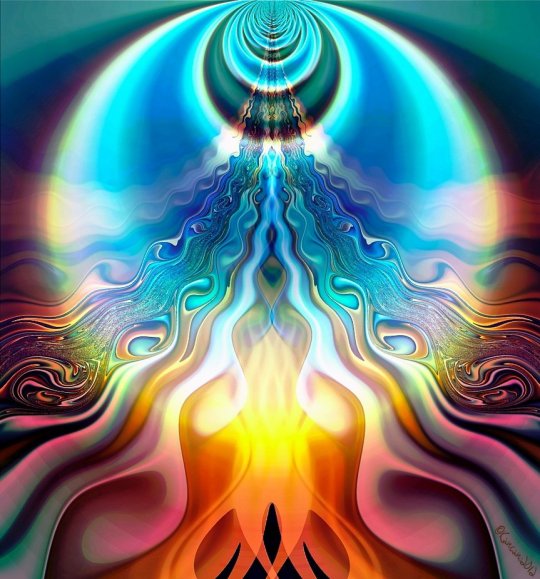
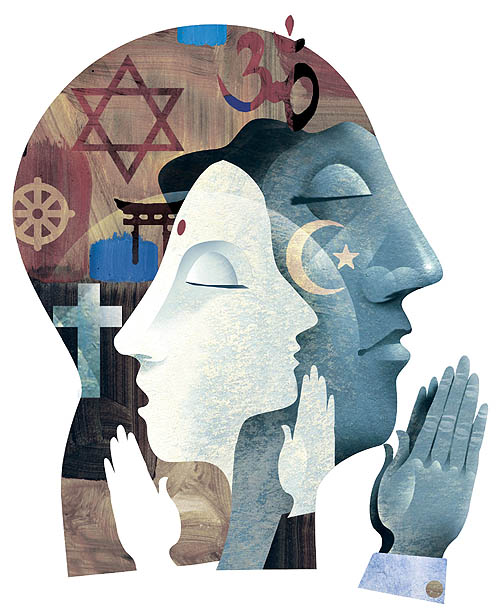
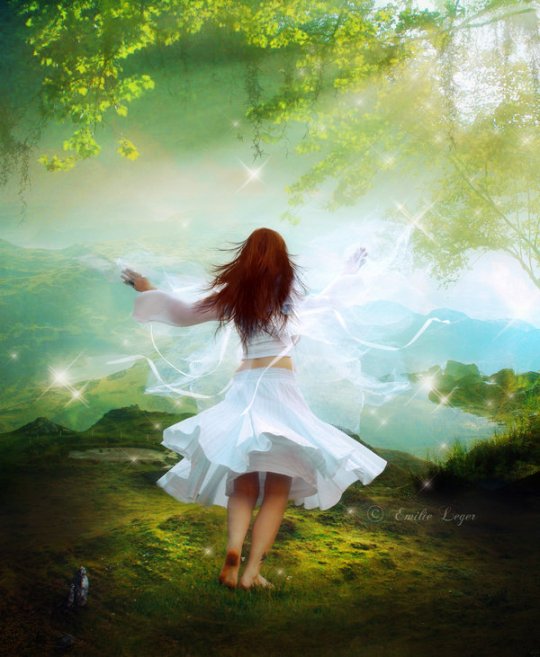
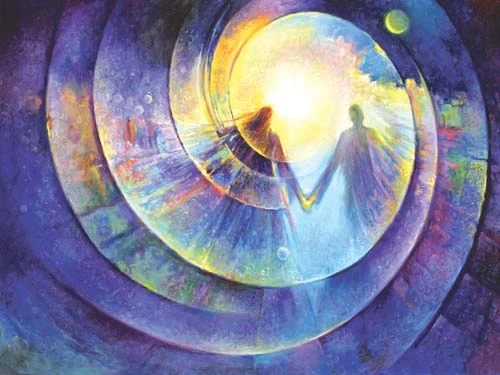
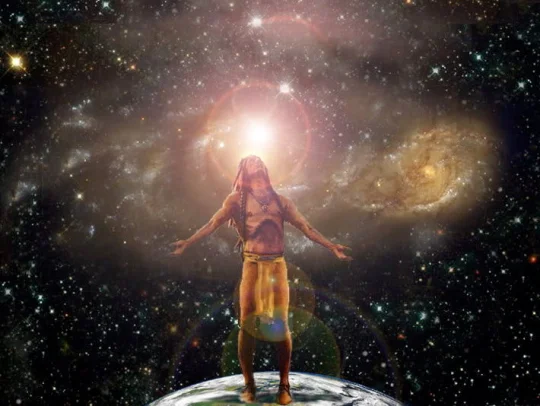
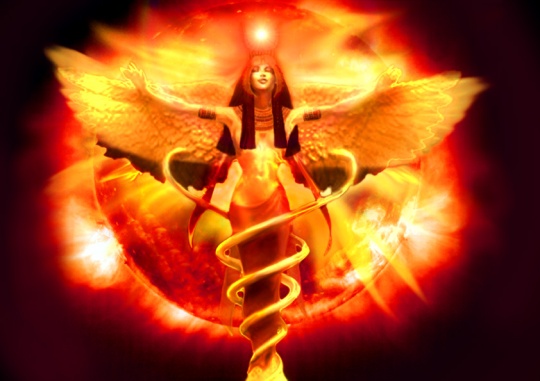
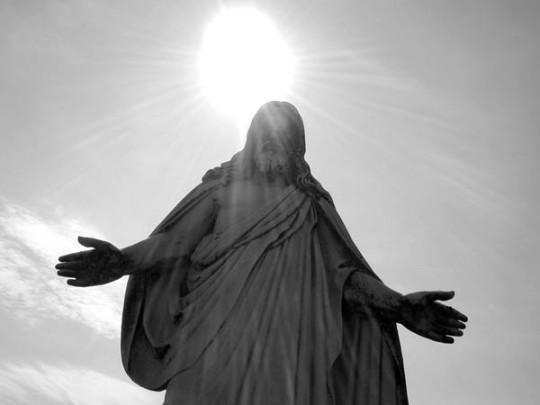
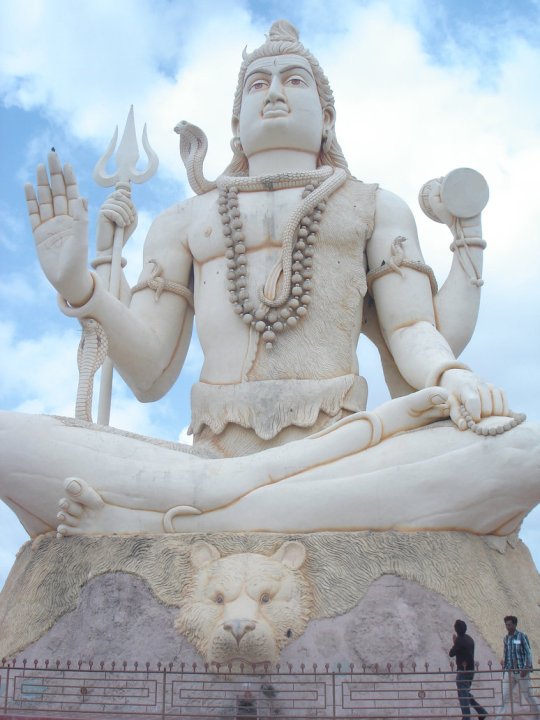
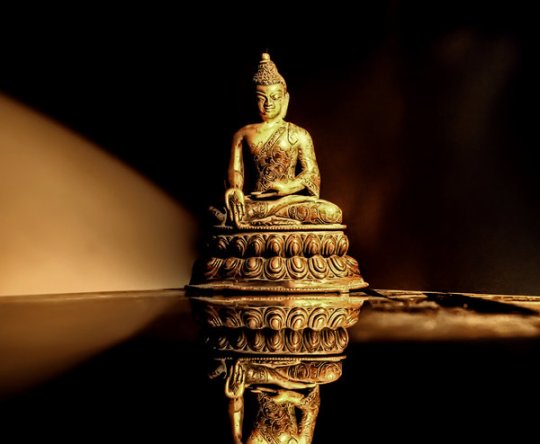

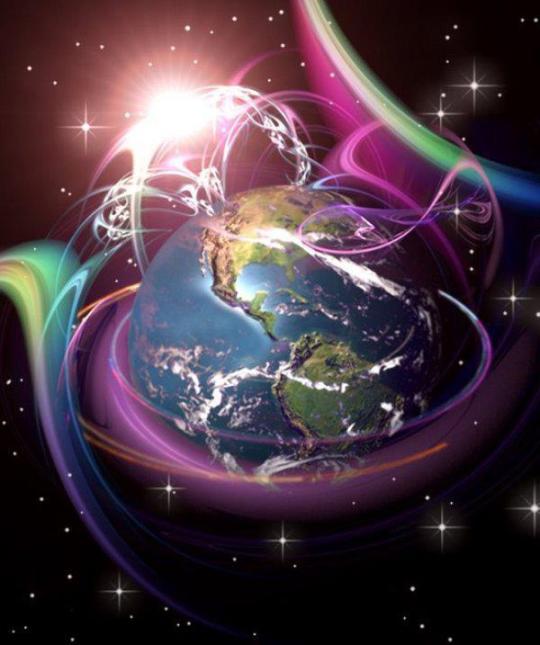
As usual you people talk about extinct civilization. But not about living civilization like India. Which had produced or producing many spiritual beings till now. You Western people seem to be blind to understand that India is the mother civilization which is older than any existing civilization
You are right, Tulasi Dass: the West seems oblivious to the incredible contributions of India. We’ve been so “stuck” in the Abrahamic traditions that we ARE blind to all others! But don’t despair: that is changing and we are, at long last, beginning to catch the first glimpses of a much larger view — thanks to the wide dissemination of information by (ta-dah!) The Internet, and the diligence of scholars and researchers like Richard Cassaro and Graham Hancock.
I completely agree, Bethany, when you say: “We’ve been so “stuck” in the Abrahamic traditions that we ARE blind to all others! But don’t despair: that is changing…” In my previous book, Written In Stone, I discuss this point precisely. I also explain and show the difference between the Western monotheistic religions that see a single God up above us (Judaism, Christianity, Islam) and the Eastern traditions that see divinity as something within us, rather than above us (Hinduism, Buddhism, Taoism). Thanks also for your kind words about my research. I appreciate it very much.
I´m afraid you´ve made a blanket statement that assumes (ass-u-me) that I´m not familiar with basic information about the history of India. In my first book, Written In Stone, I covered the idea that India may have been a Mother Civilization to Europe´s cultures. For instance, I spent many pages of Chapter One explaining how Sanskrit is linguistically said to be the Mother Tongue of European languages. I also explained the controversial “Aryan Invasion of India” theory, and I even offered an alternative explanation to it. In Written In Stone, I spent an entire chapter covering Hindu philosophy, and I explained how various advanced Hindu religious and philosophical concepts like Karma, Third Eye, Atman, Brahman, Reincarnation, etc., are very directly connected to the esoteric doctrine that we in the West call the “occult doctrine” and “Secret Doctrine.” To make your point, I believe India was the location of an advanced ancient civilization. However, the same High Wisdom that makes Indian culture so magnificent was also present in Peru, Mexico, Egypt, China and other places in the world at about the same ancient time. What´s abundantly clear, though, is that India has preserved a memory of this High Wisdom better than anyone anywhere else. As you say, it´s “still living” in India, whereas in other places (like Peru and Mexico) it´s become a dead religion (thanks mostly to barbarians like the Conquistadors).
The concept of reincarnation is already very well detailed in Indian religions and the animal to God also been described in detail in Indian religions like the story of Hanuman where he progress’s to become a god from a monkey. if you had the knowledge you would know it. This nothing new which you Western scholars are blinded to see.
Tulasi Dass,
As we continue to look further into the past of our ancestors we will see that did not originate in India as you presume, everyday we find new and unknown links that go further back in time and will continue to see that civilization began in Africa and the Middle East rather than the claims of “local scholars” who want to base it in their own region for some reason. Also where in the above article does he say anything about the origins of mankind. Reincarnation is not just an Hindu idea or virtue it is a worldwide concept from many of the ancient and current religions and ethnic beliefs. Seems you are far removed from your so called western scholars and their narrow beliefs.
I agree with everything you said, S. Kaiser, thank you. My goal is not to minimize the role of any one culture´s contributions to the history of civilization, but, rather, to show that in ancient times our ancestors from around the world all shared the same Wisdom Tradition or Universal Religion or Perennial Philosophy or whatever one wants to call it. The reason I want to show this is because I feel this wisdom tradition is just as important to “us” human beings today as it was to our ancient ancestors way back when. Thanks for your great words.
The Now seems to be pointing to a new consciousness; everywhere I turn we are discovering the clouds of lies from recent history being blown away by the courageous and the curious, be it ancient history, archaeology and the more corruptible: the medical industry, the food industry, the oil industry, the space industry….
The New Age of Enlightenment?
I agree, Kirstin. There seems to be an awakening occurring. Thanks to the Internet, many people are starting to recognize the control systems that have been put in place. I´m hopeful that the next step is going to be open rebellion against those control systems, as more and more people awaken.
Richard is a Genius to say the least. It would take a moronic idiot not to understand this great researchers findings. I read his book written in stone a few years back. It was a great awakening for me. Great Work Richard! Can’t wait to download the new E book!
Halo Richard!
In the alchemical union of opposites within the 7 chakra system we are governed by the
7 celestial bodies ( starting from the bottom left looking at the image ):
Venus, Mars, Sun, Mercury, Moon, Jupiter, Saturn.
The androgynous character is standing on the red root chakra governed by Saturn,
the 7th seal. The 4-3 numbers are 3D structure references to the tetrahedron and the cube.
3 is stylized in reference to the 3-7 hypersphere, a 4D sphere or torus.
All the stars in the REBIS image are 6 sided as in the FEMI-nine, right brained numbers system
which today is referred to as VBM or Vortex Based Math the paring of single digit numbers goes like this:
1:7 2:5 3:8 and 4:9 6 is an inverse of itself as in the astrological sign for today June 9th
Gemini the twins, in the 6th month.
6 is 1/2 the number of sides in the most fractal of all Platonic Solids the dodecahedron.
There are 12 outer circles in the Flower of Life for this reason. Jain reveals all about the
Phi Code hidden in our 24 hour day, flat circle of time.
Please keep up the awesome work you are doing Richard! Thank You!
Richard, just a further comment about the large blue egg the individual is drawn within.
Richard Hoaglund reveals a lot about the tetrahedral hyperdimensional geometry of the “Tholus” here:
http://www.maxtheknife.com/truth&light2/truth&light2.htm
Eggs emerge from creatures with the large end first so the character in the REBIS drawing is ascending.
The Tholus shape is close to an almond which is also the form of our limbic brain’s amygdala
which are used to create our projected reality in conjunction with the pineal.
Amydalae are the ignition “points” which can be aimed to flash and activate our frontal
‘bird’ brain lobes or backward to our reptilian brain stem. Neil Slade is all over our great brain adventure and clicking our amygdalae forward. Why is this so critical?
Please take a minute and watch the short video filmed at this right brain school for children:
http://www.icuacademy.co.uk/
After reading the article and then the comments I am as usual struck by the fact that humans have a seemingly overwhelming need to be right. Does it really matter where it all began? Does it really matter whether the country you call home in this lifetime is the holiest or most ancient or most anything?
After all the divisions of religion, race, sex, colour, caste, political persuasion – on and on they go, we are first and foremost members of the human race, the human family. All the other labels are self-derived and only serve to stop us from uniting and finding our personal power and peace on earth.
Richard, thank you for considering the evidence I had pointed you to some time ago. It’s good to see that you have seen the evidence and how it adds up to debunk the Aryan Invasion Theory (AIT). This whole thing was worldwide at one point. I know it sounds 1980s “I was alive thousands of years ago,” but I think there is something when I read the name Jiroft (A name that might have been something entirely different) and hear/see a very choppy-sounding helicopter. It could be wishful association or just a strange sound/visual synesthesia, another of which is chocolate pudding when I hear the word “occupancy” – don’t know why it happens. I can’t get that helicopter out of my mind when I see “Jiroft.”
Fascinating! Written in Stone was a mind mending book. I can’t wait to download “The Missing Link”. Thank you so much for your hard work to bring this powerful information to us.
The article could have included three other examples. The Gebel el-Araq knife found in Egypt and now in the Louvre has a carving of a Mesopotamian holding two lions in a Master of Animals pose and dates circa 3200 B.C. Tomb 100 of a prince of Heirakonpolis has a similar wall painting and dates to 3500 to 3300 B.C. The Long Man of Wilmington is a 70m. high carving in a hillside in Sussex, U.K. depicting a man holding a staff in each hand.
Richard Cassaro via aweber.com
Jun 10 (1 day ago)